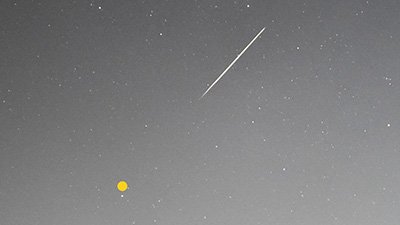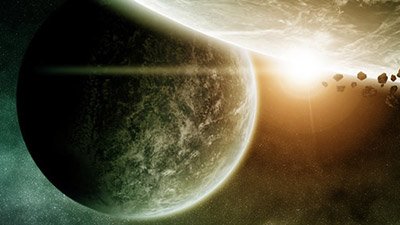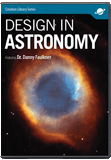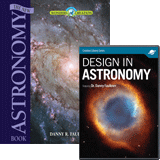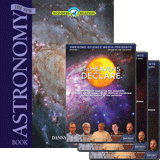Superhabitable Planets
Astronomers have attempted to identify exoplanets likely to support life though their efforts have generated scant results so far.
A recent article in the journal Astrobiology attempted to identify superhabitable planets. What is a superhabitable planet? Much discussion about the possibility of life elsewhere has focused on earth-like planets. But what makes the earth so special, other than the fact that it has life? The authors of this study argued that using the earth as the standard to determine where life is possible is anthropocentric and violates the Copernican principle, that there is nothing remarkable about us or our location in the universe. The authors conclude that life would be more likely on planets that exceeded the earth’s ability to sustain life. The definition they established for superhabitability was planets having greater biomass and higher biodiversity than the earth.
What Is Necessary for a Superhabitable Planet?
The first criterion to consider for superhabitability is the type of star a planet orbits.
The first criterion to consider for superhabitability is the type of star a planet orbits. The sun is a G main sequence star.1 Many people consider the sun to be ideal for supporting life on orbiting planets that have all the right properties. Main sequence stars provide relatively long lifetimes and stability. However, the main sequence lifetimes of stars more massive than the sun (spectral types O, B, A, and F) have lifetimes appreciably shorter than the sun (nearly 10 billion years). Evolutionists generally think that the origin and evolution of intelligent life requires billions of years (4 billion years on earth), so main sequence stars more massive than the sun should be eliminated from consideration. That leaves stars of similar mass to the sun (other G-type) and stars less massive than the sun (spectral types K and M).

Photo by LucasVB, via Wikimedia Commons.
The authors argued that given the sun’s relatively modest lifetime, stars orbiting other G main sequence stars may not have enough time to evolve intelligent life. Therefore, since K and M main sequence stars have lifetimes that are much longer than the sun’s 10 billion years, they are more likely candidates for intelligent life. However, the authors of this study argue against M-type stars hosting superhabitable planets because the habitable zones for any planets suitable for life are very close to the stars. This almost certainly would lead to tidal locking, resulting in planets that orbit with one side perpetually facing the star (always day) and the other side perpetually facing away from the star (always night). This is not a good condition for life, so the authors of this study conclude that K main sequence stars are most favorable, with G main sequence stars being second best.

Photo by Unmismoobjetivo, via Wikimedia Commons.
The authors argued that given the sun’s relatively modest lifetime, stars orbiting other G main sequence stars may not have enough time to evolve intelligent life. Therefore, since K and M main sequence stars have lifetimes that are much longer than the sun’s 10 billion years, they are more likely candidates for intelligent life. However, the authors of this study argue against M-type stars hosting superhabitable planets because the habitable zones for any planets suitable for life are very close to the stars. This almost certainly would lead to tidal locking, resulting in planets that orbit with one side perpetually facing the star (always day) and the other side perpetually facing away from the star (always night). This is not a good condition for life, so the authors of this study conclude that K main sequence stars are most favorable, with G main sequence stars being second best.
Given this time constraint for evolution to occur, young G and K main sequence stars are not good candidates. After all, if a star (and presumably its planets) are only 2 billion years old, it isn’t very likely that advanced life has evolved yet. Therefore, the authors of this current study identified stars that were judged to be at least as old as the sun (4.6 billion years) to be the best candidates. However, they cautioned, age estimates of individual stars can be very tricky.
As for planetary properties conducive for life, the first consideration is orbiting in a star’s habitable zone. If a planet is not in or at least close to its star’s habitable zone, it must be eliminated from consideration. What other properties might lead to greater biomass and higher biodiversity? The authors thought that an average temperature about 5° C higher than that on earth would be ideal (apparently, the authors of this study didn’t get the many memos on the dangers of global warming). The authors considered other factors, such as the proportion of surface water on planets, the ratio of water to land, and the presence of internal heat and plate tectonics (plate tectonics are good). All these considerations led to identifying planets a bit larger than the earth as superhabitable.
Results
Of the more than 4,000 exoplanets thus far discovered, the researchers identified two dozen candidates for what they considered to be superhabitable planets.
Of the more than 4,000 exoplanets thus far discovered, the researchers identified two dozen candidates for what they considered to be superhabitable planets. However, the paper said that only two of the 24 exoplanets “are statistically validated planets.” What does this mean? “The other objects are unconfirmed Kepler Objects of Interest (KOIs), some of which may turn out to be astrophysical false positives.” Kepler was a recent space mission looking for exoplanets via transits. KOIs are suspected transits that Kepler observed but have not been confirmed. That is, 22 of the 24 superhabitable planets may not exist! Furthermore, the remaining two planets orbit early G-type main sequence stars, stars that are no better than the sun, according to the criteria laid out in this paper.
Laying that problem aside, the characteristics of planets that are considered so important for life are completely unknown for these exoplanets. All we know about any of these planets is their orbital distance and size. As the authors of the study admit, everything else is unknown.
Conclusion
This paper failed to deliver on its promises. It mostly was a discussion about what parameters (of both a planet and the star it orbits) would make the possibility of life greater than on earth, thus fulfilling the definition of a superhabitable planet. If the paper had stopped with that, it might have been tolerable. However, with so little known about the properties of any exoplanets, it is a tremendous stretch to suggest that we truly have examples of any superhabitable planets, especially when some of them likely don’t even exist. Therefore, the inclusion of possible superhabitable planets was at best far premature.
The evolutionary speculations hardly are a challenge to the biblically based creation worldview. We know that God has specially created the earth to be inhabited (Isaiah 45:18). There is no other world so described in Scripture. The implication of the rest of the Bible is that man is the center of God’s attention (e.g., Genesis 1; Psalm 8:3–8). We don’t expect there to be other inhabitable worlds, superhabitable or otherwise.
Footnotes
- It has become fashionable now to call lower main sequence stars “dwarfs,” but I resist this, preferring “lower main sequence stars.”
Recommended Resources

Answers in Genesis is an apologetics ministry, dedicated to helping Christians defend their faith and proclaim the good news of Jesus Christ.
- Customer Service 800.778.3390
- © 2024 Answers in Genesis


